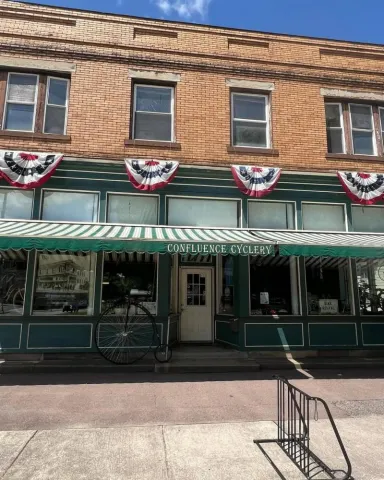Confluence
On June 26, 1871, the Pittsburgh and Connellsville Railroad was completed between Cumberland and Pittsburgh, meeting at Fort Hill. Confluence hosted the celebration. Precisely 130 years later, on August 24, 2001, Confluence again marked a milestone—the opening of the first 100-mile stretch of the Great Allegheny Passage to Fort Hill.
True to its name, Confluence sits where the Yough and Casselman Rivers merge with Laurel Hill Creek. Explorer Christopher Gist dubbed the area "Turkeyfoot," inspired by the shape of the streams—an English translation of the Native American term. The region was home to Indian settlements and was sometimes referred to as "Crow Foot."
The Turkeyfoot Path, an ancient Native American trail, crossed the mountains to Cumberland, Maryland, providing travelers with a shortcut through rugged terrain. Washington camped here on May 20, 1754, considering it ideal for a fort. He later paddled to Ohiopyle in search of a water route west but turned back at the falls, ten miles away, precisely as he estimated.
Failing to find a passage by river, Washington took the Nemacolin Path. Within days, he ambushed French forces, triggering the French and Indian War. His fort at Turkeyfoot was never built.In 1800, William Tissue mapped a town here called New Boston, but Confluence remained more of a waystation for cattle drovers than a settlement. The old Turkeyfoot Road continued serving westbound traffic even after the National Road was paved.
In the early 1900s, Confluence thrived due to its coal, lumber, and rail traffic. Its largest industry was the Beggs Tannery, which leveraged local hemlock bark for leather until its closure in 1920. The B&O central line split here, with an alternate "Low Grade" route added in 1902; both reconnect at Brook, a name on the railroad but little else.
After the industry declined and the dam was built, Confluence's fortunes waned. But river and trail tourism revived it. Today, this flat, trailside town—with a welcoming square, gazebo, and slow-paced charm—is coming back to life.
